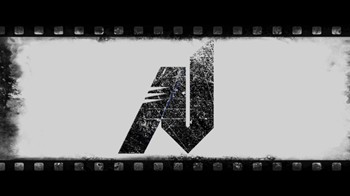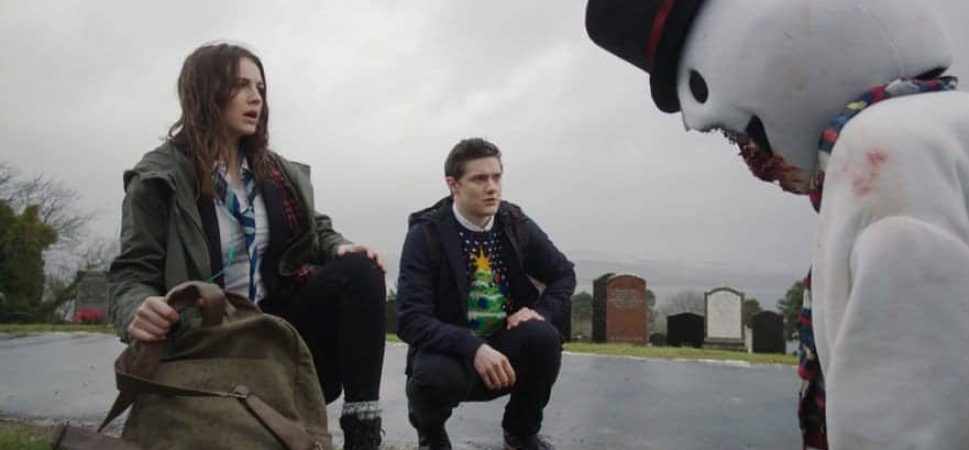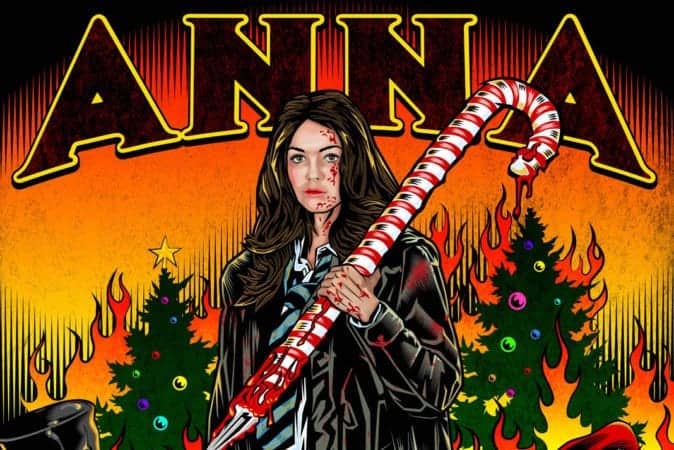If it wasn’t for a check-in guy who thought he was the pompous receptionist that David Spade used to play on Saturday Night Live, you wouldn’t be reading this review of Anna and the Apocalypse. Luckily, I was able to get in on account of a friendly box office guy at the Arclight Hollywood, who gave me a prime ticket to guarantee me a spot. Thank you, whoever you are, or else I wouldn’t have had to write a review based on the curation of Metacritic reviews.
That brings us to our main event. The British import Anna and the Apocalypse is a flawed work that takes half of its 97-minute running time to redeem itself. Balancing Christmas movie, musical, high school comedy, zombies, and romance, the ambition is noble but overreaching. In hindsight of Edgar Wright’s genre-bender Shaun of the Dead, it’s derivative, but it manages to rise avoid complete failure.
As winter holiday approaches, high school senior Anna (Ella Hunt) disappoints her blue-collar father (Mark Benton) when she reveals that she plans to temporarily bypass higher education for world traveling after graduation. Chaos surrounds her life. She works a boring job at a bowling alley with classmate John (Malcolm Cumming), who she can’t decide whether he’s in the friend zone or commitment zone. She has a close bond with American exchange student Steph (Sarah Swire), a foul-mouthed lesbian and perpetual wild card. Her worst enemy is Savage (Game of Thrones’ Paul Kaye), the school headmaster micromanaging the school’s tacky Christmas play.
That all takes a back seat to Anna’s issues when a worldwide pandemic invades their small English town of Little Haven. Zombies lurch their way into town, executing their desire for human flesh. As the world begins to witness the apocalypse, Anna’s microcosm becomes endangered.
The forefront, glaring issue of Anna and the Apocalypse is that it labors, almost comically so, to be the next cult classic. This issue permeates the film, from its cosplay-friendly costumes to its genre novelty. Recently, I saw David Cronenberg speak at a Q&A about how the screenwriting process is not a place to think of iconic moments. There’s also the Shane Black notion of imagining a trailer for your screenplay, but it does not guarantee a sound product. Any professor abiding by Blake Snyder’s Save the Cat or Robert McKee’s Story would have chucked the script in the trash.
Look at some of the biggest midnight draws of all time. The Rocky Horror Picture Show never became an interactive midnight event because Richard O’Brien hedged his bets on his camp stage musical becoming a film. Recently, Mandy organically drummed up hype as a cult film thanks to its surreal aesthetic and Nicolas Cage’s unhinged performance. Adapted from Zombie Musical, a short film written by the late Ryan McHenry—the man who created the Ryan Gosling cereal meme—the script by McHenry and Alan McDonald is unique, but not original or unforgettable. There’s never flair; it’s merely a show-off.
At first glance, the top half of the film is insufferable. I say that straight up. Roddy Hart and Tommy Reilly’s songs are over-processed, coupled with saccharine choreography. Worse is the way it tackles the world at large. It’s fascinating that we learn of a worldwide undead crisis in an admirable attempt at world building, but the characters are more interested in playing “Fuck, Marry, Kill” with zombies and debating what celebrities will fall prey. The pop culture references are so obnoxious that even Tarantino would cringe.
For example, one character beams at news of Justin Bieber’s death, while an extended conversation about how Robert Downey Jr. can’t be stopped because he’s Iron Man functions as mere dead weight. We also set up the too-conveniently-named Savage as the villain. He has no backstory, other than being a raging, autocratic prick who would probably be the only educational official to welcome Betsy DeVos to the United Kingdom. Why is he trying to help the zombies and hold everyone hostage in the school? I don’t know. Probably because his last name is Savage.
Those first 45-odd minutes took a toll on me. The twee whimsy is pure overkill; imagine watching a Glee tribute to zombie movies. However, something of a Christmas miracle happens at that halfway mark. There is no way I can spoil exactly what it is, but Anna makes a 180 into a more somber, dangerous film. Predictability gets tossed aside in favor of making the zombies threatening. Loyalty and emotions are tested with gusto. Most significantly, however, is the uptick of Hart and Reilly’s music. The Top 40 power-pop is jettisoned for darker anthems of dread and survival that end up justifying the soundtrack. The songs are entirely based in mood, tied to the film’s rising conflict.
The real star of the film is its lead, Ella Hunt. Anna is the film’s sole thought-out character. She has clear ambitions for her young life that are addressed in the opening minutes. In tandem, it explains her headstrong leadership against Savage and the zombies. A sweetheart at her core, Hunt gives Anna a tough skin as a reluctant hero. Her motivation is not survival but a will to live for life experiences. Sure, her work uniform and weaponized candy cane prop are a blatant attempt to make her the next Shaun or Ash, but Hunt is a genuine delight. I hope to see more of her in films to come.
Anna and the Apocalypse has a rough start that takes a great while to rebound from. Even then, it’s not a full rebound—the third act has at least two blatant lifts from Shaun of the Dead that tamper its creativity. As a curiosity in the horror genre, it’s perfectly fine to recommend, but its Icarus-like aspirations only register a hesitant thumb up.




1 Comment
October DVD Round-Up [DVD reviews] | AndersonVision